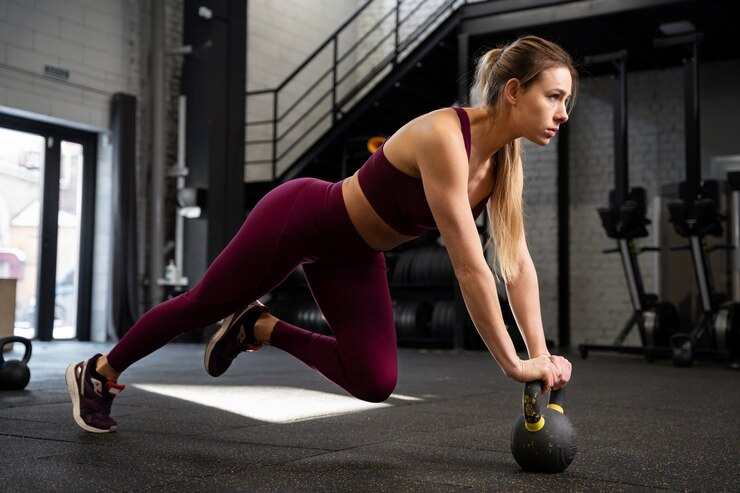Functional fitness exercises have gained popularity in recent years for their effectiveness in improving overall strength, flexibility, and mobility. Unlike traditional gym workouts that isolate specific muscle groups, functional fitness focuses on movements that mimic real-life activities. This article explores the benefits, types, and methods of incorporating functional fitness exercises into your routine.
Additionally, ensuring a clean and hygienic workout environment is essential for maximizing your exercise experience. Utilizing a Gym Wipes Dispenser can provide convenient access to disinfectant wipes, allowing you to maintain cleanliness and hygiene throughout your functional fitness sessions.
Introduction to Functional Fitness Exercises
Functional fitness exercises are designed to enhance your ability to perform daily tasks with ease and efficiency. Whether you’re lifting groceries, playing sports, or simply bending down to tie your shoes, functional fitness helps you move better in your everyday life.
Benefits of Functional Fitness Exercises
Functional fitness offers numerous benefits, including:
Improved Strength and Stability
By engaging multiple muscle groups simultaneously, functional fitness exercises improve overall strength and stability. This leads to better balance and coordination, reducing the risk of falls and injuries.
Enhanced Flexibility and Mobility
Many functional fitness movements involve dynamic stretching and full range of motion, promoting flexibility and mobility. This is particularly beneficial for older adults looking to maintain their independence and mobility as they age.
Increased Core Strength
A strong core is essential for maintaining proper posture and stability during daily activities. Functional fitness exercises target the core muscles, including the abdominals, obliques, and lower back, resulting in a stronger, more resilient midsection.
Greater Functional Capacity
By simulating real-life movements, functional fitness exercises improve your ability to perform tasks more efficiently and with less effort. This translates to increased energy levels and improved quality of life.
Types of Functional Fitness Exercises
Functional fitness exercises can be performed using various equipment or just your bodyweight. Here are some common types:
Bodyweight Exercises
Bodyweight exercises such as squats, lunges, push-ups, and planks are excellent for improving strength and stability without the need for additional equipment.
Resistance Band Exercises
Resistance bands are versatile tools that provide adjustable resistance to challenge your muscles. Exercises like band rows, bicep curls, and lateral walks target different muscle groups and improve overall strength.
Medicine Ball Exercises
Medicine balls are great for adding resistance and instability to your workouts. Exercises like medicine ball slams, twists, and throws help develop core strength and coordination.
How to Incorporate Functional Fitness into Your Routine
Incorporating functional fitness into your routine is easy and can be done anywhere, anytime. Start by choosing exercises that target multiple muscle groups and focus on functional movements like pushing, pulling, squatting, and rotating.
Common Mistakes to Avoid
When starting a functional fitness routine, it’s important to avoid common mistakes that can lead to injury or frustration. Some common pitfalls include:
- Overtraining: Giving your muscles time to rest and recover is crucial for progress and injury prevention.
- Neglecting Proper Form: Performing exercises with improper form can diminish their effectiveness and increase the risk of injury.
- Ignoring Mobility Work: Flexibility and mobility are essential components of functional fitness. Incorporate dynamic stretches and mobility drills into your routine to improve movement quality.
Tips for Success
To get the most out of your functional fitness workouts, consider the following tips:
- Start Slow: Gradually increase the intensity and duration of your workouts to prevent burnout and injury.
- Focus on Quality Over Quantity: Pay attention to proper form and technique to maximize results and reduce the risk of injury.
- Listen to Your Body: If something doesn’t feel right, don’t push through the pain. Modify the exercise or seek guidance from a fitness professional.
Sample Functional Fitness Workout Routine
Here’s a simple functional fitness workout routine to get you started:
- Warm-up: 5-10 minutes of dynamic stretching and mobility exercises
- Circuit:
- Bodyweight squats: 3 sets of 12 reps
- Push-ups: 3 sets of 10 reps
- Resistance band rows: 3 sets of 12 reps
- Medicine ball twists: 3 sets of 15 reps (each side)
- Cool-down: 5-10 minutes of static stretching
Precautions and Safety Measures
Before starting any new exercise program, it’s important to consult with a healthcare professional, especially if you have any pre-existing medical conditions or injuries. Additionally, always warm up properly before exercising and listen to your body’s signals to avoid overexertion.
Conclusion
Functional fitness exercises offer a practical and effective way to improve strength, flexibility, and mobility for everyday activities. By incorporating functional movements into your routine and focusing on proper form and technique, you can enhance your overall quality of life and reduce the risk of injury.
Incorporate these exercises into your fitness regimen and experience the transformative benefits of functional fitness!
FAQs
- Is functional fitness suitable for beginners?
- Yes, functional fitness exercises can be modified to suit individuals of all fitness levels, including beginners. Start with basic movements and gradually progress as you build strength and confidence.
- Can functional fitness help with rehabilitation after an injury?
- Yes, many functional fitness exercises can be adapted for rehabilitation purposes, under the guidance of a qualified healthcare professional. These exercises can help improve strength, mobility, and coordination during the recovery process.
- Are functional fitness workouts time-consuming?
- Not necessarily. Functional fitness workouts can be tailored to fit your schedule and lifestyle. Even short, high-intensity sessions can yield significant benefits when performed consistently.
- Can functional fitness exercises improve sports performance?
- Yes, functional fitness exercises can enhance sports performance by improving strength, agility, and balance. Many athletes incorporate functional training into their routines to complement their sport-specific skills.
- Are there any age limitations for functional fitness exercises?
- No, functional fitness exercises can be beneficial for individuals of all ages. Older adults, in particular, can greatly benefit from functional exercises to maintain independence and quality of life.



